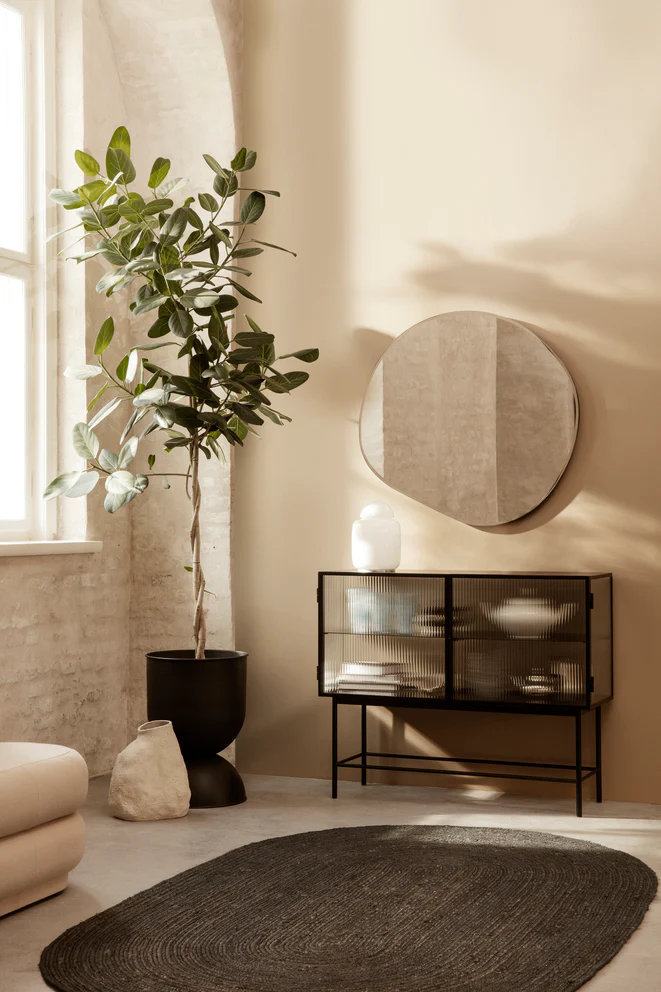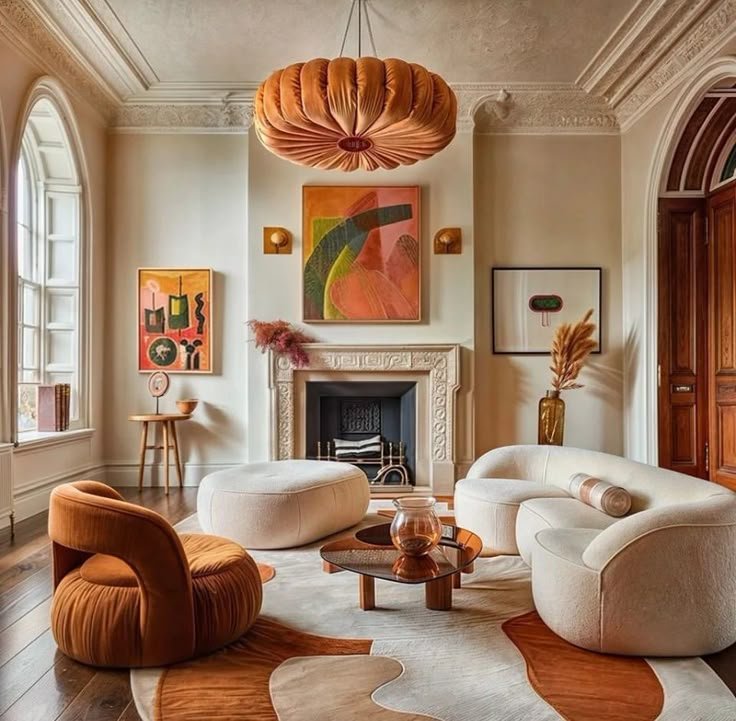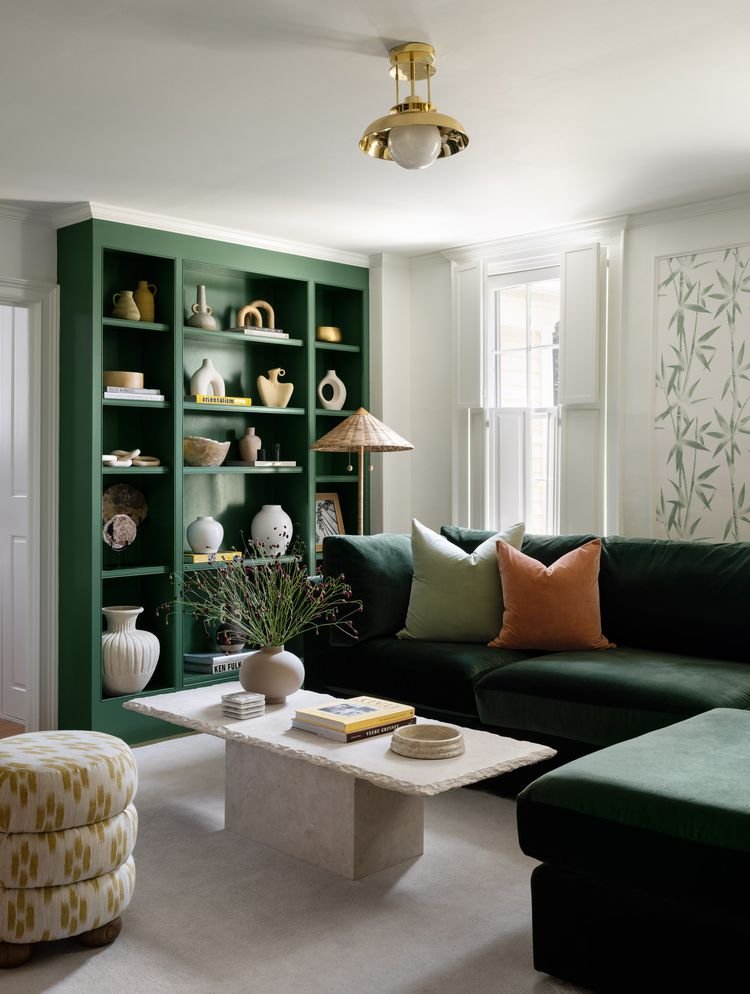


Understanding the Challenges of Small Spaces
Small spaces are often fraught with unique challenges that can greatly affect the decor and overall functionality of the area. One of the most immediate issues encountered in smaller environments is the limited square footage, which can hinder the potential design options. With reduced space, every item needs to be carefully selected to maximize both aesthetic appeal and functionality.
Another significant challenge is the lack of natural light that many small spaces endure. Darker areas can make rooms feel even smaller and may limit design choices that require brighter, airy environments. This limitation demands creativity in selecting color palettes and lighting solutions to create a more inviting atmosphere. Utilizing mirrors and light-colored walls can help to enhance brightness and give the impression of a larger area.
Additionally, the need for strategic planning is paramount when it comes to decor in small spaces. The choice of furniture and layout becomes critical; pieces must be multifunctional or compact to avoid overcrowding. For instance, a coffee table that can double as storage or a sofa that can convert into a bed allows for more versatile use of the space. Similarly, wall-mounted shelves and floating desks can save essential floor area while providing necessary functionality.
Ultimately, understanding these challenges is crucial for decor enthusiasts looking to transform their small living environments. By acknowledging the constraints of limited space and the impact of light, strategic design can breathe new life into any area. The next step involves exploring innovative and creative decor ideas tailored specifically for small environments.
Choosing the Right Color Palette
When it comes to decorating small spaces, the color palette you choose can have a significant impact on the overall perception of the area. Light and neutral tones are particularly effective in creating an airy and open atmosphere, making the space feel larger than it is. Shades such as whites, soft grays, and pale pastels reflect light, thereby enhancing the feeling of openness. These colors serve as a foundation that can be easily complemented with various design elements, allowing for versatility in decor.
Incorporating pops of color through accessories, artwork, or furniture can inject vibrancy into a space without overwhelming it. Consider using brighter colors such as yellows, blues, or greens for accents against a neutral background. This approach not only adds visual interest but also allows you to express personal style without the risk of making the space feel cramped. Remember that balance is key; an excess of bright colors can be counterproductive, leading to a chaotic and cluttered impression.
The psychological effects of color should also be taken into consideration when selecting a palette. For example, blues and greens are often associated with calmness and tranquility, making them ideal choices for bedrooms or relaxation areas. On the other hand, warm colors like reds or oranges can evoke energy and warmth, suitable for social spaces such as living rooms or kitchens. Therefore, understanding color psychology can serve as a guide in creating an environment that aligns with the desired mood and functionality of each area.
Ultimately, the right color palette can significantly enhance the aesthetics and perception of space in a small area. A thoughtful combination of light and neutral base colors, accented with strategic pops of color, can transform the environment, making it feel open and inviting while also reflecting your personal style.
Maximizing Vertical Space
In small living environments, the efficient use of vertical space is paramount. By embracing the height of your rooms, you can significantly enhance both functionality and aesthetics. One effective method to achieve this is through the strategic installation of shelving. Floating shelves, for instance, not only offer practical storage solutions but also serve as a canvas for displaying decorative items, thereby drawing the eye upward. Incorporating shelves in varying sizes can create a dynamic look while accommodating books, vases, and other personal artifacts.
Wall-mounted storage solutions present another opportunity to maximize vertical space. These can range from sleek cabinets to open shelving units. A well-placed wall-mounted system keeps essentials at hand while maintaining an open floor plan, which is often crucial in compact settings. Additionally, consider using pegboards as versatile wall decor; they allow for the easy arrangement of tools, craft supplies, or kitchen items, thus reducing clutter and promoting an organized appearance.
Tall furniture pieces can further optimize limited spaces. Bookcases that reach the ceiling or tall dressers can provide ample storage without taking up significant floor space. The visual impact of these elements helps elongate the room, fostering an inviting atmosphere. Furthermore, choose furniture with mirrors or light colors to reflect light and create an illusion of airiness. Vertical planters or tall plant stands can enhance the decorative aspect while contributing to a refreshing ambiance of greenery.
Employing these techniques not only makes the most of vertical space but also elevates the overall decor of your small area. By effectively utilizing height, you can create a more spacious and visually appealing environment, ensuring that every inch of your home is both functional and stylish.
Incorporating Multifunctional Furniture
In the realm of small space decor, the significance of incorporating multifunctional furniture cannot be overstated. As urban living spaces continue to shrink, homeowners and renters alike are increasingly seeking furniture solutions that maximize both space and functionality. Multifunctional furniture, such as sofa beds, storage ottomans, and expandable tables, provides an excellent means to optimize the living area without sacrificing aesthetic appeal.
Sofa beds are quintessential multifunctional pieces. By day, they serve as comfortable seating, and at night, they easily transform into beds to accommodate guests. This adaptability makes them ideal for small apartments where traditional guest rooms are impractical. A well-chosen sofa bed offers style and comfort, making it a valuable addition to any compact living space.
Another excellent option is the storage ottoman, which can serve dual purposes as both seating and storage. These ottomans come in various designs, allowing them to blend seamlessly with existing decor. When not in use, they can discreetly store blankets, magazines, or other items, thereby reducing clutter in small spaces. Additionally, many models can also function as a coffee table, providing a versatile solution for maximizing utility without overwhelming the room.
Expandable tables are also a clever way to accommodate more guests when necessary. For small dining areas, tables that can be extended or collapsed based on the occasion are invaluable. These can easily transition from an intimate setting for two to a full dining experience for guests, making them perfect for entertaining in small homes.
Incorporating multifunctional furniture not only enhances the practicality of a small space but also preserves the overall aesthetic. By selecting stylish yet functional pieces, homeowners can create a space that is both livable and visually appealing, thus proving that even the smallest spaces can benefit from well-considered design choices.
Using Mirrors to Create Illusions of Space
Mirrors are an exceptionally versatile decor element that can dramatically transform small spaces. Their ability to reflect light and create an illusion of depth can make a compact room feel significantly larger and more open. By utilizing mirrors strategically throughout a small space, homeowners can enhance both natural and artificial lighting, enriching the overall ambiance and visual appeal of a room.
When selecting mirrors for small spaces, it is essential to consider not only the size but also the style. A large, floor-length mirror can serve as a stunning focal point, particularly in narrow hallways or tiny living rooms. Conversely, a collection of smaller mirrors arranged artfully on a wall can create an intriguing gallery effect and draw the eye around the room, further enhancing the sense of space. Opting for mirrors with frames that complement the room’s decor can introduce harmony while maximizing light reflection.
The placement of mirrors is equally critical in augmenting the illusion of space. Positioning a mirror across from a window can amplify natural light and create the effect of an airy, expansive vista. Similarly, reflecting light fixtures can activate a room’s brightness, making it feel more lively and inviting. For bathrooms and smaller bedrooms, adding a mirror directly above a sink or dresser can enhance functionality and visually enlarge these intimate spaces, making them feel more luxurious.
In addition to size and placement, selecting mirrors with unique shapes or designs can add character and style to small areas. Circular or geometric mirrors can soften the linearity of furniture and break up the monotony of square-shaped rooms. Ultimately, incorporating mirrors as part of a strategic decor plan not only enhances the perception of space but also contributes to a layered, dynamic aesthetic.
Decorative Lighting Options for Small Areas
Lighting plays a pivotal role in the overall ambiance and perception of space within compact environments. In small areas, the right lighting can dramatically transform the aesthetic, making rooms feel more spacious and inviting. There are three primary types of lighting to consider: ambient, task, and accent lighting. Each serves a unique purpose while also contributing to the overall decor.
Ambient lighting acts as the primary source of illumination in a small space. It provides a soft, overall light that helps fill any room with a gentle glow, allowing all elements of the decor to shine. For small areas, ceiling-mounted fixtures or wall sconces provide effective solutions that conserve floor space. A dimmable ceiling fixture or a well-placed pendant light can also create varied light levels that enhance the versatility of a room.
Task lighting focuses on specific areas to make certain activities easier and safer. In small spaces, using fixtures that blend seamlessly with the decor is essential. For instance, under-cabinet lights in a kitchen can illuminate countertops without occupying valuable space. Likewise, a stylish desk lamp can offer light where it is needed for reading or working without overwhelming the area.
Accent lighting is particularly important in a small space as it helps to highlight key decor elements. Using floor lamps or wall-mounted lights to direct attention to artwork or architectural features can create focal points within the room. A good strategy is to place accent lights at varying heights to add depth and dimension to the overall decor.
When it comes to decorative lighting in small areas, innovative solutions abound. Choosing multifunctional fixtures, such as smart lighting that adjusts to the time of day, can enhance both convenience and style. Additionally, mirrored surfaces can amplify the light and create an illusion of a larger space, further improving the overall atmosphere.
Adding Personal Touches with Decor Accessories
In the realm of small space decor, the use of decor accessories emerges as a pivotal element, effectively infusing personal style while maintaining a sense of balance. Accessories serve as essential tools to convey one’s individuality, transforming a mundane space into a reflection of the occupant’s personality and tastes. When selecting decor items, it is vital to consider how each piece harmonizes with the overall theme and color palette of the room.
Artwork stands as a primary expression of personal taste, providing an opportunity to showcase creativity. Whether opting for a bold, oversized painting or a collection of smaller framed prints, artwork can become a focal point, drawing attention and fostering visual interest. Furthermore, hanging art at eye level expands the perception of space, making the area feel more inviting and curated.
Plants represent another impactful decor accessory, introducing nature and color into compact environments. Selecting low-maintenance varieties, such as succulents or snake plants, can not only enhance the aesthetic appeal but also improve air quality. Arranging plants on shelves, windowsills, or hanging from the ceiling can effectively utilize vertical space while adding life and vibrancy to the decor.
Additionally, decorative objects such as vases, books, or sculptures allow for personalization without overwhelming a small area. These items can serve functional purposes while also contributing to the decor theme. Maintaining a cohesive style—be it modern, bohemian, or minimalist—is vital, as it ensures the space does not feel cluttered. Employing a few well-chosen accessories can create an inviting atmosphere that resonates with the occupant’s unique style, enhancing both comfort and functionality in smaller spaces.
Sustainable Decor Choices for Small Spaces
The growing awareness of environmental issues has led to an increased interest in sustainable decor choices, particularly for those living in small spaces. Implementing eco-friendly decor not only promotes a healthier environment but also adds a unique touch to your living area. One effective way to achieve this is by sourcing sustainable furniture crafted from renewable resources. Materials such as bamboo, reclaimed wood, or sustainably harvested materials are not only durable but also create an inviting atmosphere.
Another aspect of sustainable decor is the use of recycled decorations. Choose items made from recycled materials, whether it be decorative vases, artwork, or even upcycled furniture. Integrating these pieces adds character to your space, allowing you to showcase your commitment to sustainability while enhancing the aesthetic appeal of your home. Thrift stores, flea markets, and online platforms focusing on pre-loved items are excellent sources for such decor. You may even find unique pieces that not only serve a functional purpose but also tell a story.
When planning your small space decor, consider using a minimalist approach, which significantly resonates with sustainable living principles. Focus on quality over quantity, selecting fewer but impactful pieces that work well together. Prioritize items that are multifunctional; for instance, a storage ottoman can serve as seating, a footrest, or a place to store blankets. These choices not only save space but also minimize the amount of material needed in your home.
Sustainable decor choices ultimately offer the benefits of eco-friendliness, creativity, and functionality, making a significant impact in small living environments. By consciously selecting materials and items, you can create a harmonious living space that aligns with both your personal style and environmental values.
